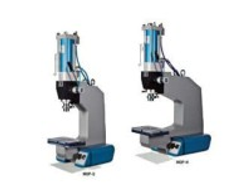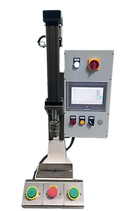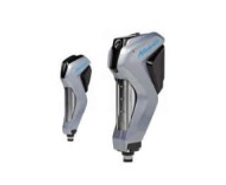- changdeliequip
- Nov 25, 2024
- 3 min read

Hydro pneumatic systems are the backbone of many industrial processes, providing reliable power and control for various applications. However, sourcing these systems isn't always straightforward. Companies face numerous challenges, from finding the right supplier to ensuring system compatibility and sustainability. In this article, we'll dive into the top challenges in hydro pneumatic sourcing and explore how expert suppliers help businesses overcome them.
1. Understanding the Technical Requirements
One of the biggest hurdles in hydro-pneumatic sourcing is understanding the system's specific technical requirements. Companies often struggle to define their needs, leading to mismatched equipment and inefficiencies.
Solution: Expert hydro pneumatic press supplier assist by providing detailed consultations, analyzing the operational environment, and recommending systems tailored to your specifications. Their in-depth knowledge ensures that you get a solution that fits seamlessly into your processes.
2. Ensuring Compatibility with Existing Systems
Integrating new hydro pneumatic components with existing machinery can be daunting. Compatibility issues can lead to costly downtime and system malfunctions.
Solution: Reputable suppliers offer customization services and compatibility assessments. They ensure new components align perfectly with your current setup, minimizing disruptions and maximizing productivity.
3. Navigating Cost Constraints
Budget limitations are a common concern for businesses when sourcing hydro pneumatic systems. High-quality equipment often comes at a premium, leaving companies searching for cost-effective alternatives.
Solution: Leading suppliers offer tiered pricing models and a range of products to suit different budgets. They also provide long-term cost analyses, helping you understand how investing in quality systems can save money over time through reduced maintenance and improved efficiency.
4. Quality Assurance and Reliability
Ensuring the quality and reliability of hydro pneumatic systems is crucial. Substandard equipment can lead to frequent breakdowns, increased maintenance costs, and safety risks.
Solution: Trusted suppliers adhere to strict quality standards and provide certifications to validate their products. By choosing a supplier with a proven track record, you can rest assured that you're investing in dependable equipment.
5. Meeting Sustainability Goals
As industries move toward greener practices, sourcing sustainable hydro pneumatic solutions has become a top priority. However, finding suppliers that align with your sustainability goals can be challenging.
Solution: Forward-thinking suppliers now offer eco-friendly systems to reduce energy consumption and minimize environmental impact. By partnering with such suppliers, you can achieve your sustainability targets without compromising performance.
6. Managing Lead Times and Availability
Delays in procurement can disrupt project timelines, especially when specific hydro pneumatic components are out of stock or have long lead times.
Solution: Reliable suppliers maintain robust inventory systems and work with multiple manufacturers to reduce lead times. Some even offer expedited shipping options to ensure your business stays on schedule.
7. Handling Complex Supply Chains
The global nature of hydro pneumatic sourcing often involves navigating complex supply chains. Factors like fluctuating tariffs, geopolitical tensions, and logistical hurdles can complicate procurement.
Solution: Experienced suppliers streamline supply chain management by leveraging vital relationships with manufacturers and logistics providers. Their expertise ensures smooth, hassle-free product delivery to your location.
8. Access to After-Sales Support
Purchasing hydro-pneumatic systems is just the beginning. Companies may struggle with installation, troubleshooting, and maintenance without proper after-sales support.
Solution: Leading suppliers provide comprehensive after-sales services, including technical support, on-site assistance, and training for your team. Their support ensures optimal performance and extends the lifespan of your equipment.
9. Staying Updated with Technological Advancements
The hydro pneumatic industry constantly evolves, with new technologies emerging to enhance efficiency and functionality. Staying updated on these advancements can be overwhelming for businesses.
Solution: Reputable suppliers act as industry partners, informing you about the latest innovations and offering upgrades that improve your operations. They ensure your systems remain competitive and future-ready.
10. Building Long-Term Supplier Relationships
Finding a supplier that consistently meets your needs can be a challenge. Many companies switch suppliers frequently, leading to inconsistent quality and service.
Solution: The best suppliers focus on building long-term relationships. They prioritize customer satisfaction, offer personalized solutions, and act as reliable partners for all your hydro pneumatic needs.
Conclusion
Sourcing hydro pneumatic systems comes with its fair share of challenges, but the right supplier can effectively overcome them. Expert suppliers are crucial in simplifying the procurement process, from providing tailored solutions to ensuring sustainability and reliability. By partnering with a trusted supplier, businesses can meet their operational goals and set themselves up for long-term success.




